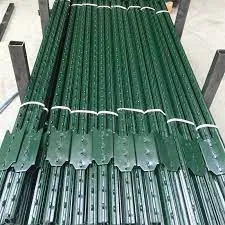Installing Welded Wire Fencing on Sloped or Uneven Terrain for Optimal Stability
Installing Welded Wire Fence on Uneven Ground
Installing a welded wire fence on uneven ground can be a challenging yet rewarding task. Such an installation not only provides necessary boundaries for livestock and pets but also adds a protective layer around gardens and landscapes. This article outlines the steps and considerations to make your fence installation smooth and effective, even when dealing with irregular terrain.
Understanding Your Terrain
Before beginning the installation process, it's essential to evaluate the area where you plan to build the fence. Take a close look at the slope, dips, and uneven spots in the ground. Document the terrain by taking measurements and notes on how much adjustment will be necessary throughout the installation.
When encountering steep slopes or deep valleys, consider the fence's design. Decide whether you want a straight fence line, which would require stepping (a series of horizontal sections that adapt to the ground level), or if you want to follow the contour of the land, which may be more aesthetically pleasing and practical.
Materials and Tools Needed
To start, gather all necessary materials and tools. For a welded wire fence installation, you will need
1. Welded wire rolls 2. Fence posts (wood or metal) 3. Post anchors or concrete for securing the posts 4. Wire cutters 5. Fence pliers 6. Level 7. Measuring tape 8. Digging tools (shovel, post hole digger) 9. Tensioning tool (for tightening the wire)
Make sure to select durable welded wire that suits your specific needs. The height and thickness of the wire should be appropriate for the type of animals you are enclosing.
Installing the Fence
installing welded wire fence on uneven ground

1. Mark Your Layout Use stakes and string to outline the desired fence line. Ensure the string is taut and level. This will serve as a visual guide during the installation process.
2. Set Your Posts Begin at a corner post and dig holes at the designated intervals (typically 8-10 feet apart). For uneven ground, you may need to adjust the hole depth to ensure the posts are level. Using a level tool, check that each post stands straight before securing it in place with concrete or post anchors.
3. Adjust for Variations As you set additional posts, account for variations in the ground by either stepping the wire or allowing the fence to follow the shape of the terrain. Stepping is done by adjusting the height of the post holes. For following the contour, you might need to cut the wire at specific points to ensure a snug fit against the ground.
4. Attach the Welded Wire Once the posts are in place, unroll the welded wire fence and begin securing it to the posts starting from one end of the fence line. Use fence staples or wire ties to attach the wire, ensuring it is taut between posts. For areas with significant dips, you might need to leave the wire slightly loose to avoid strain on the material.
5. Finishing Touches At the end of the installation, double-check that the wire is tight and attached securely. Trim any excess wire and ensure that there are no sharp edges exposed. If necessary, add a top rail for extra stability and a finished look to the fence.
Maintenance and Care
After installation, regular maintenance is key to ensuring the longevity of your welded wire fence. Periodically inspect the wire for any sagging or damage from weather conditions or animal interactions. Make adjustments as needed, and tighten any loose sections to maintain a secure and effective barrier.
Conclusion
Installing a welded wire fence on uneven ground requires thoughtful planning and execution. By understanding the terrain and following a systematic approach, you can establish a sturdy and functional fence. Whether for livestock management or home security, a properly installed welded wire fence can enhance your property while standing up to the challenges of an uneven landscape. With diligence and the right tools, the results can be both aesthetically pleasing and highly effective.
-
Unlock the Strength and Versatility of Steel Wire
NewsJun.04,2025
-
The Ultimate Guide to Welded Wire Mesh
NewsJun.04,2025
-
Secure Your Structures with Premium Anchor Bolts
NewsJun.04,2025
-
Protect Your Property with High-Quality Razor Wire
NewsJun.04,2025
-
Everything You Need to Know About Concrete Nails
NewsJun.04,2025
-
Durable and Reliable Metal Posts for All Your Fencing Needs
NewsJun.04,2025














